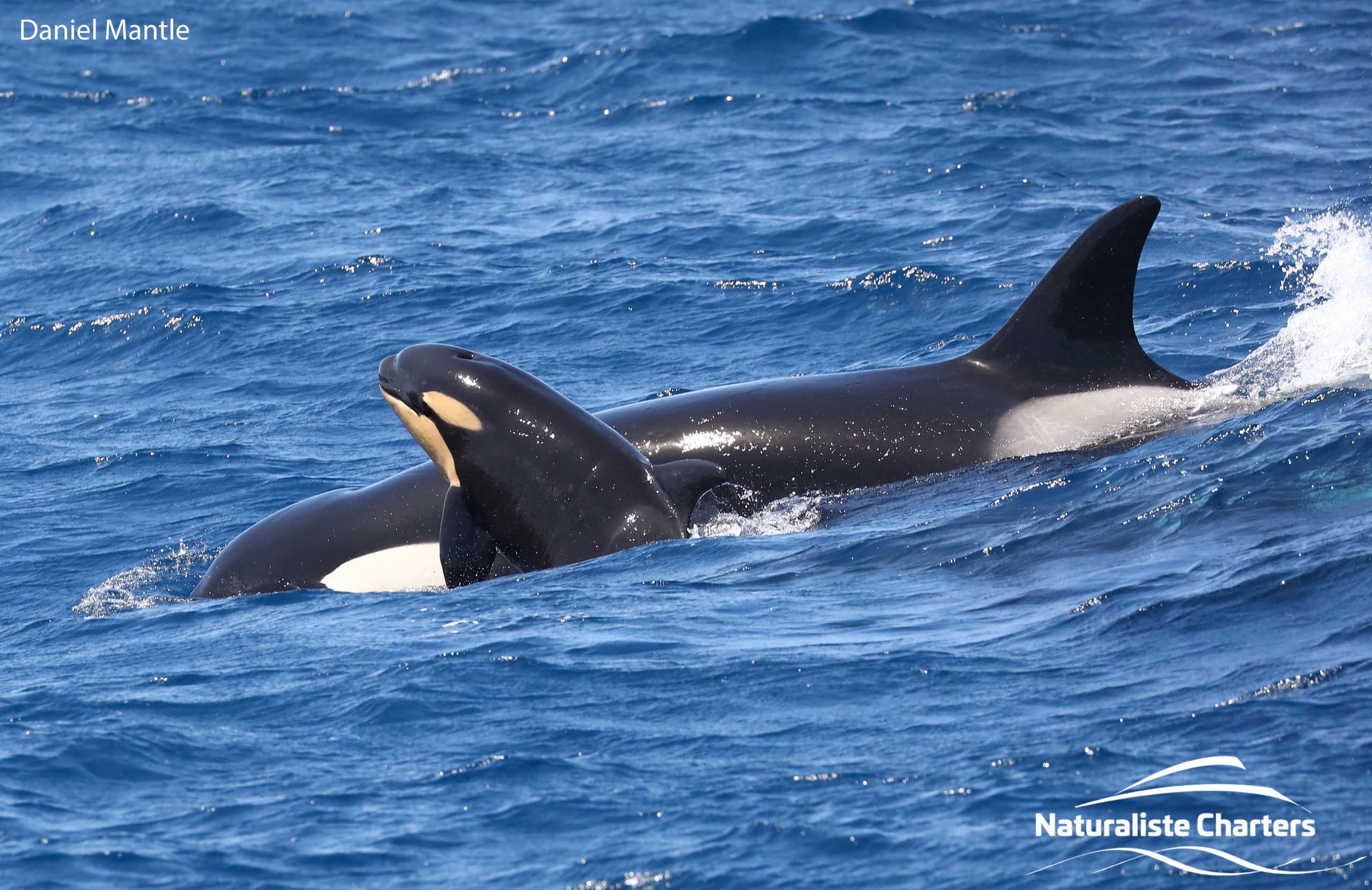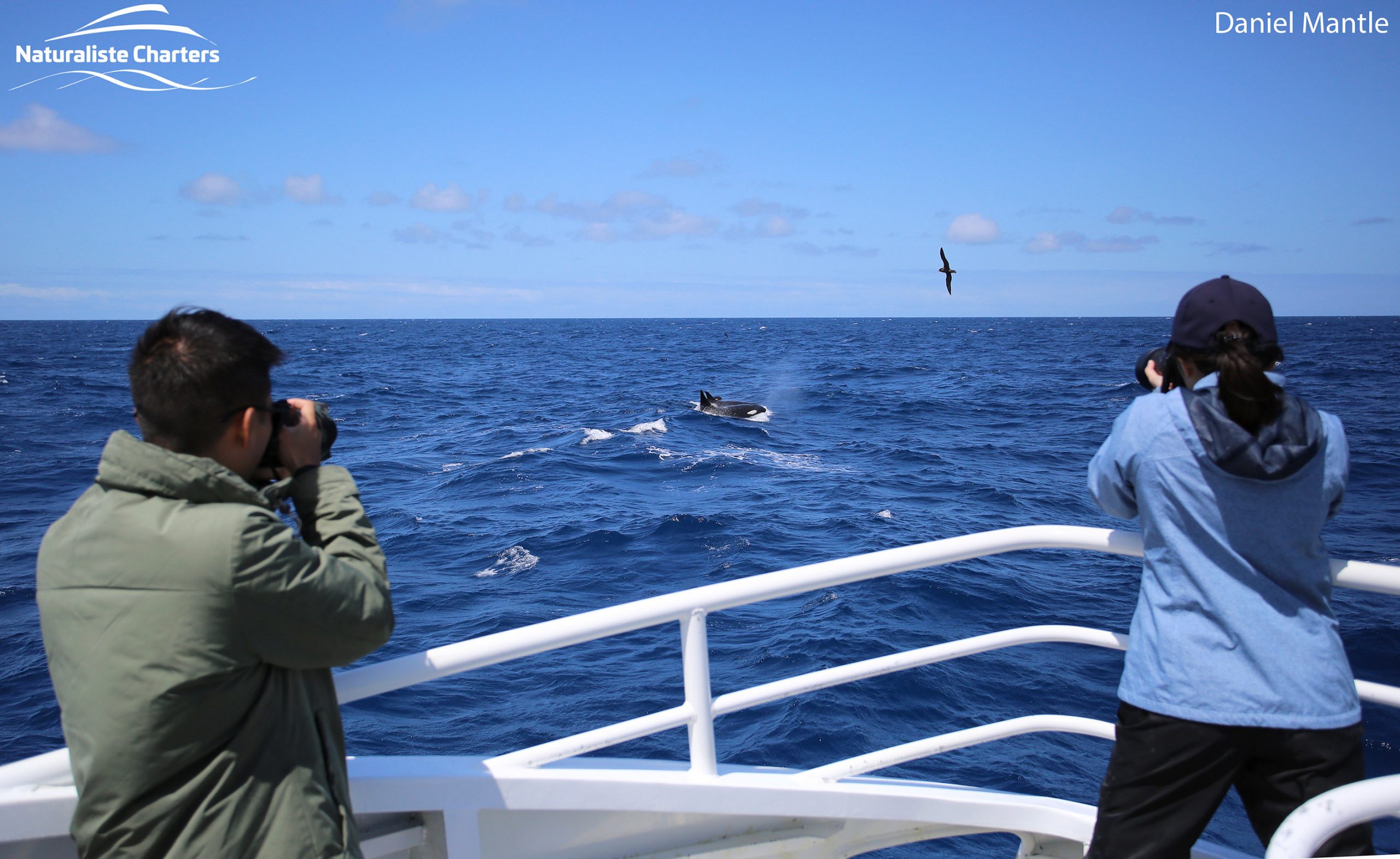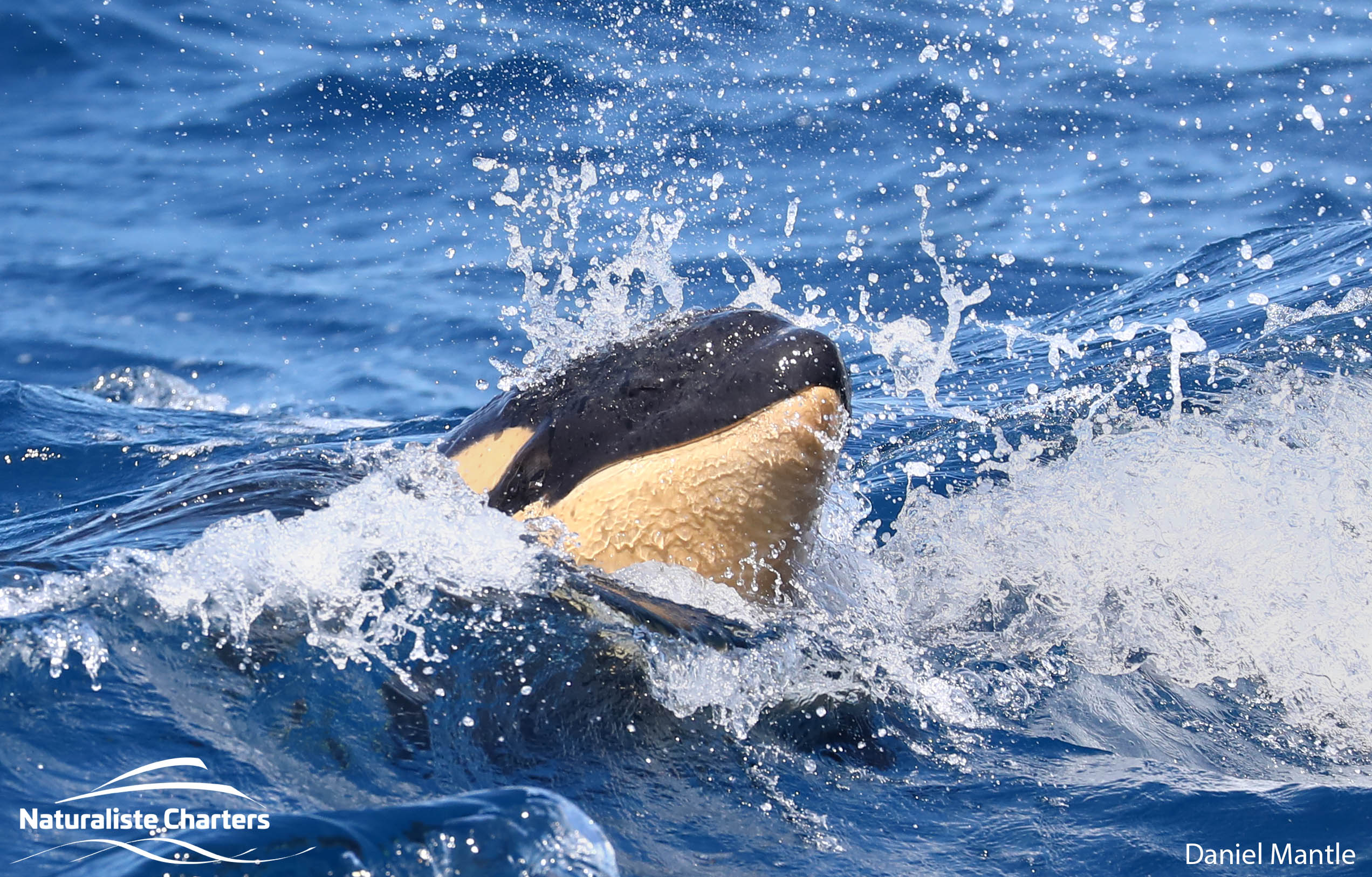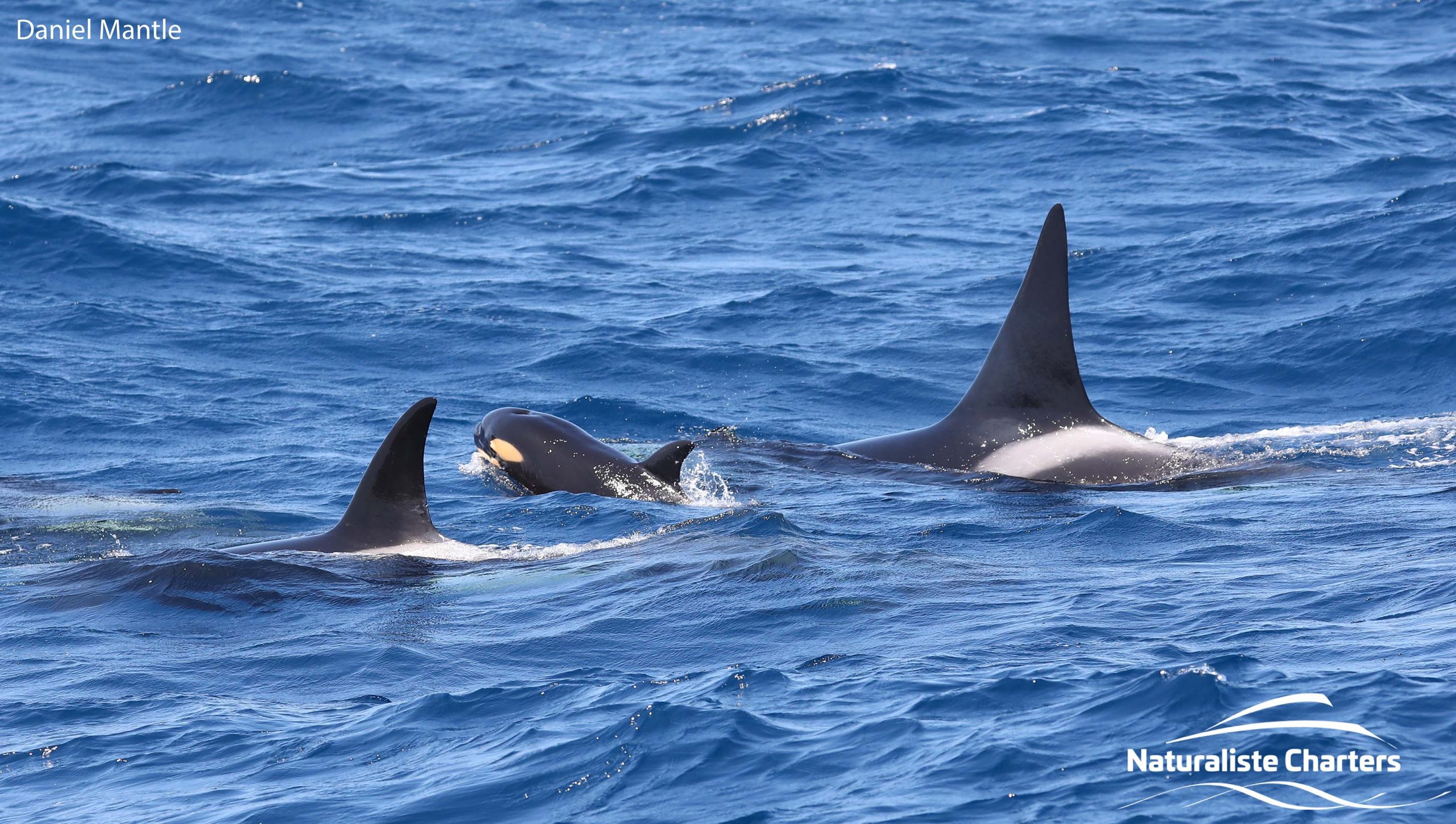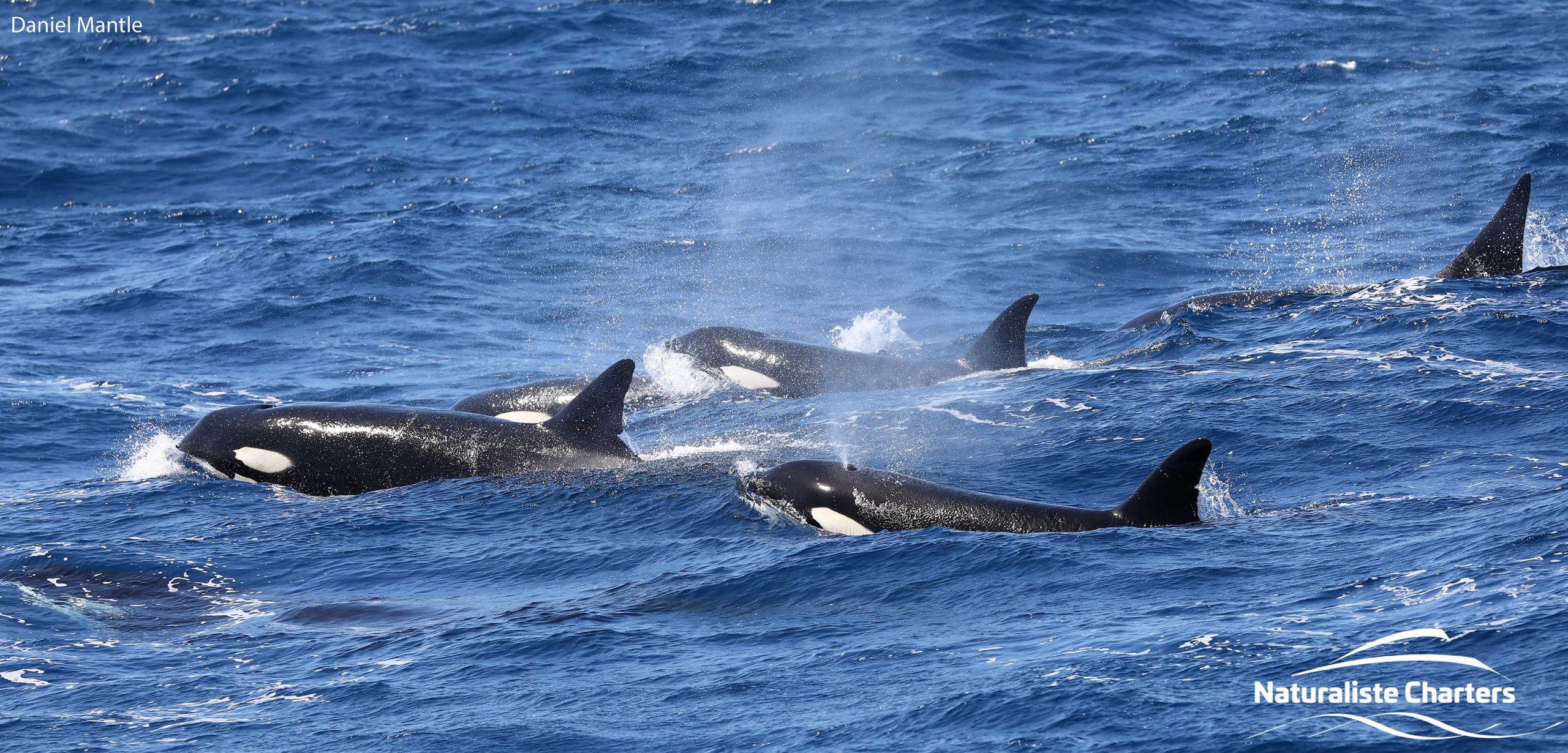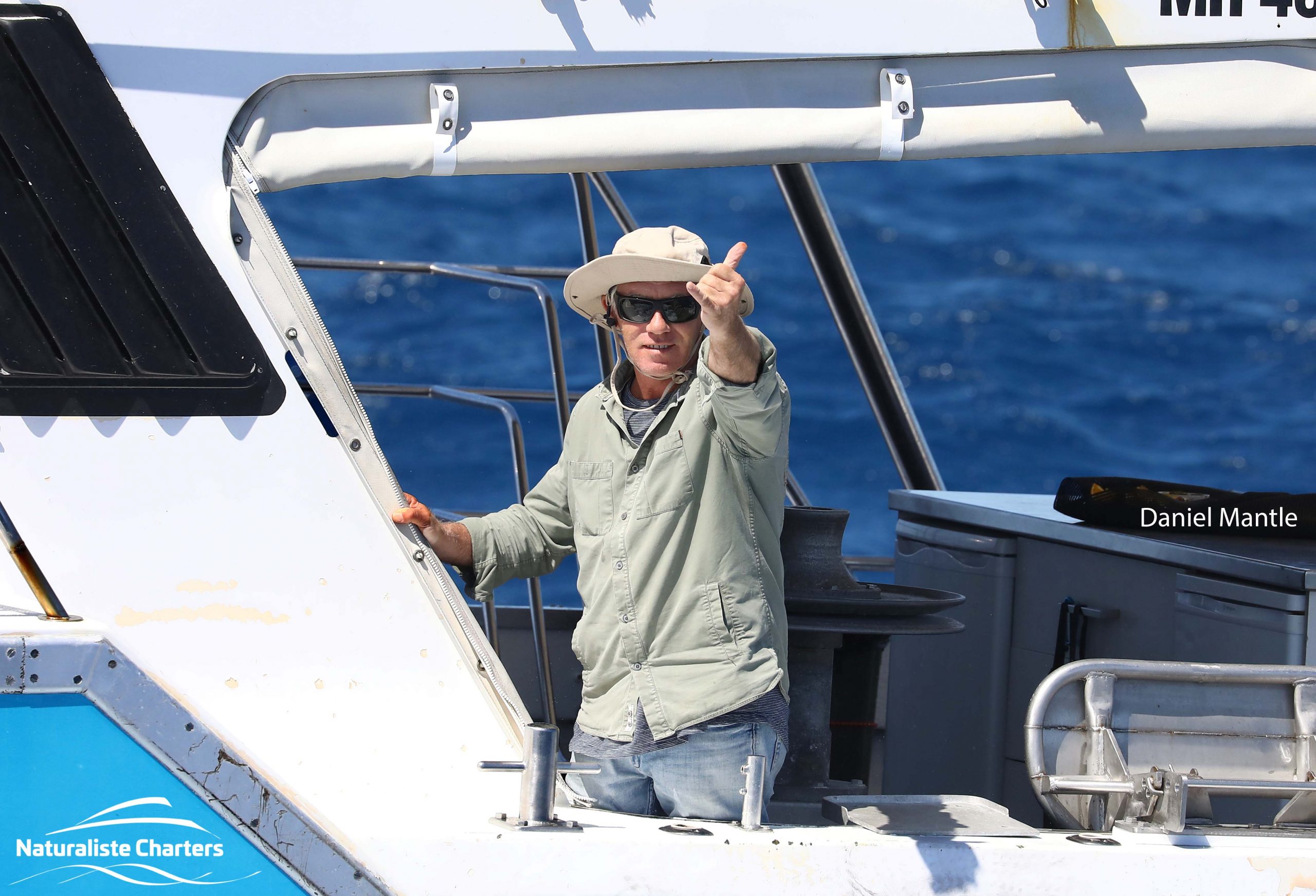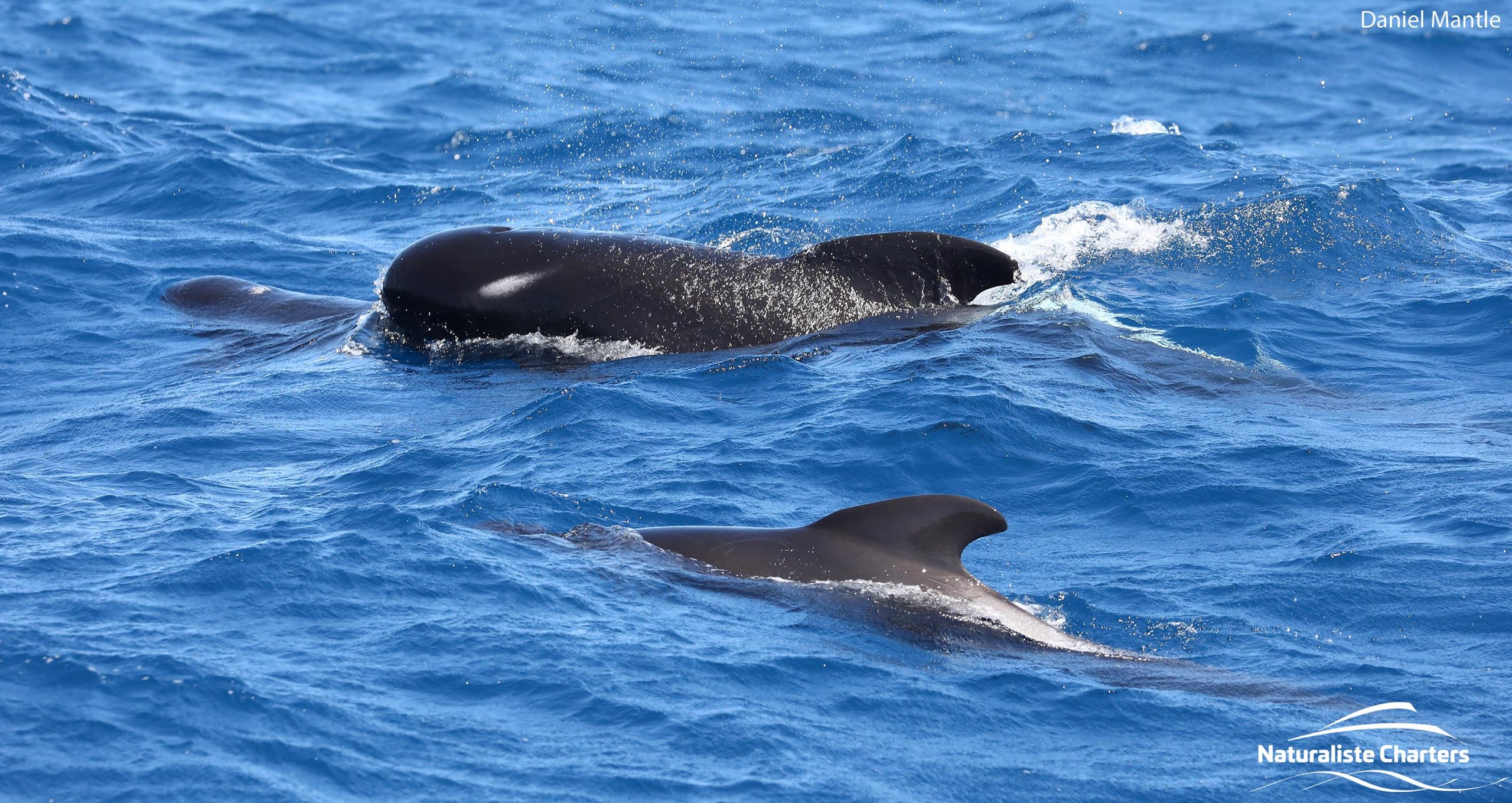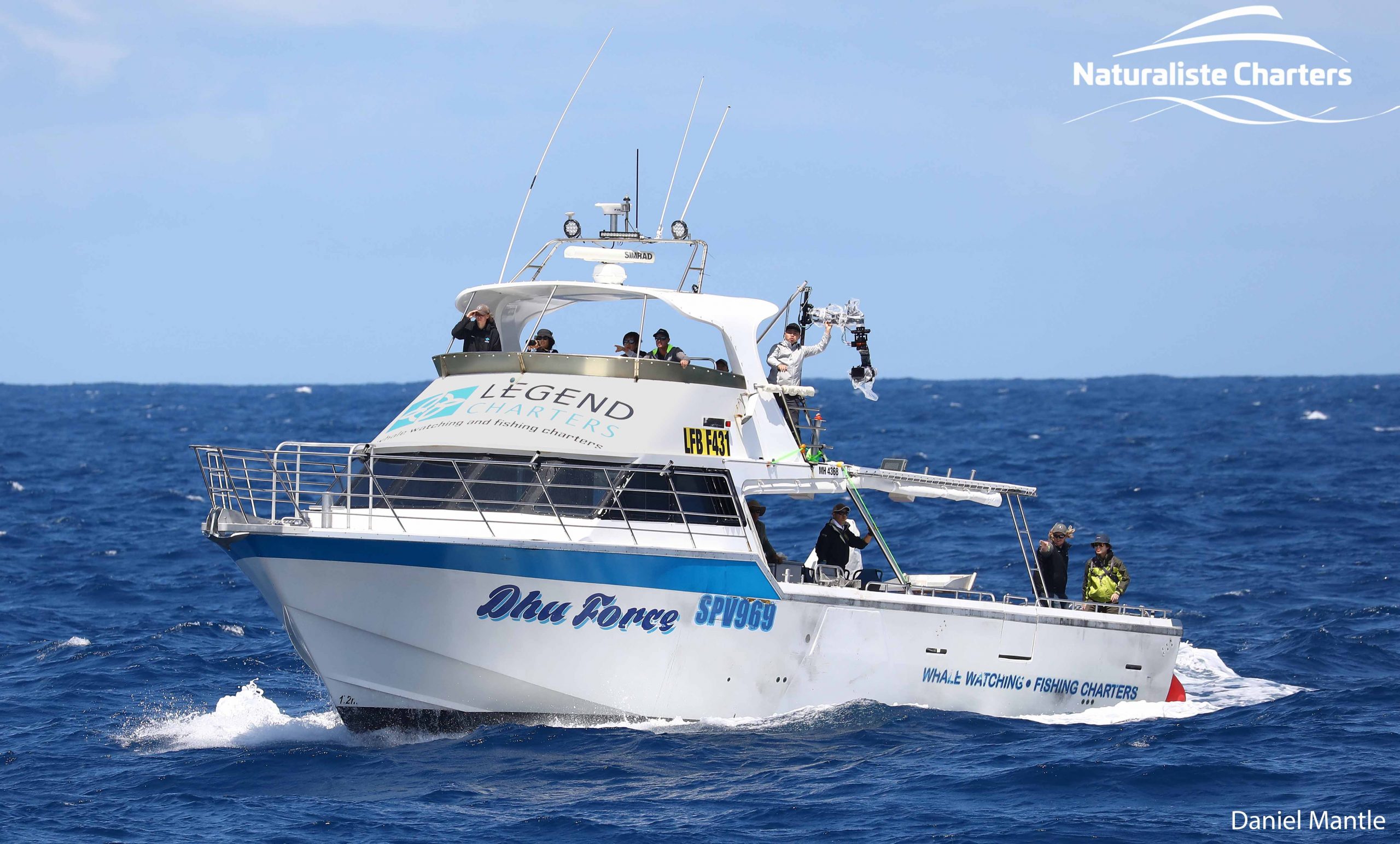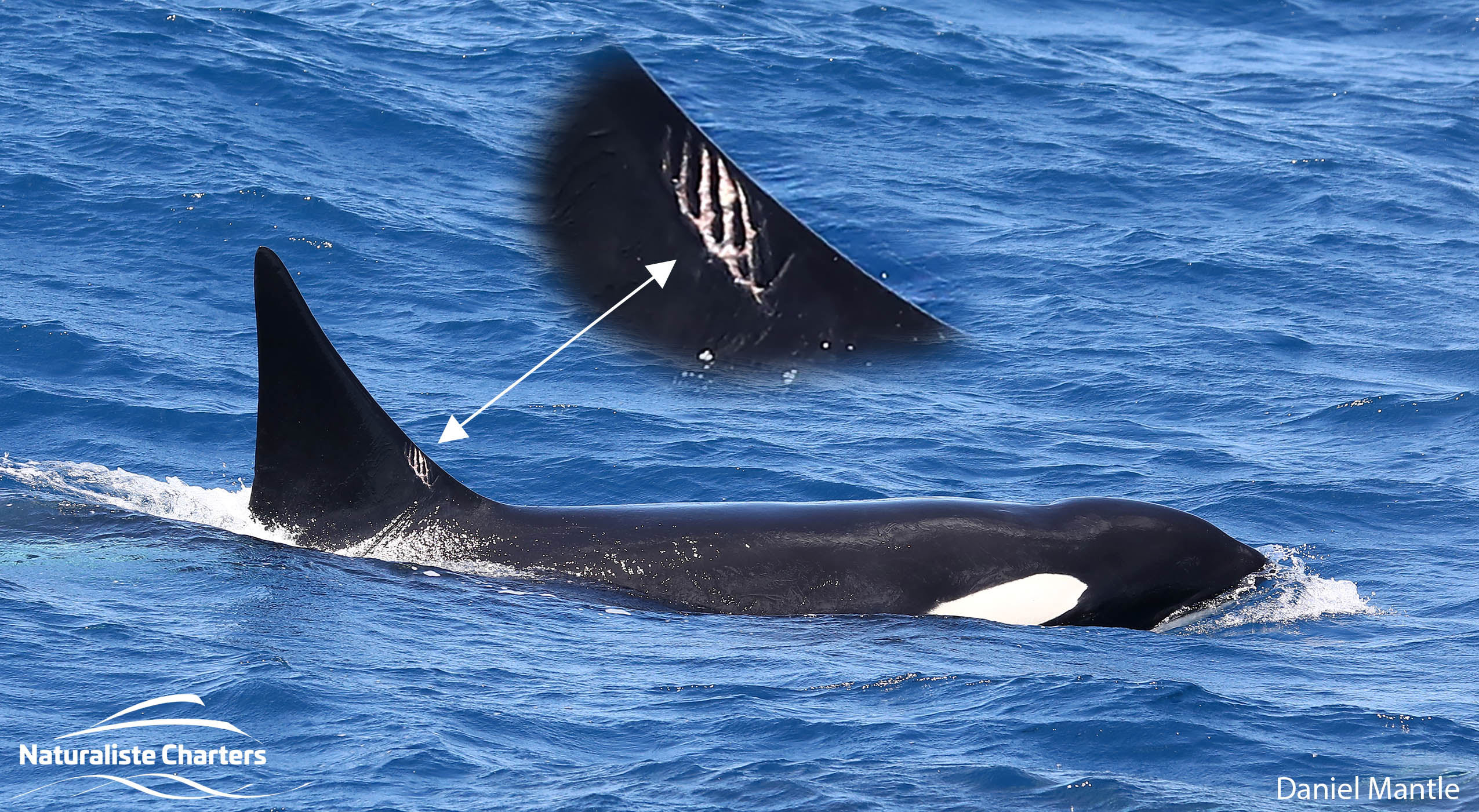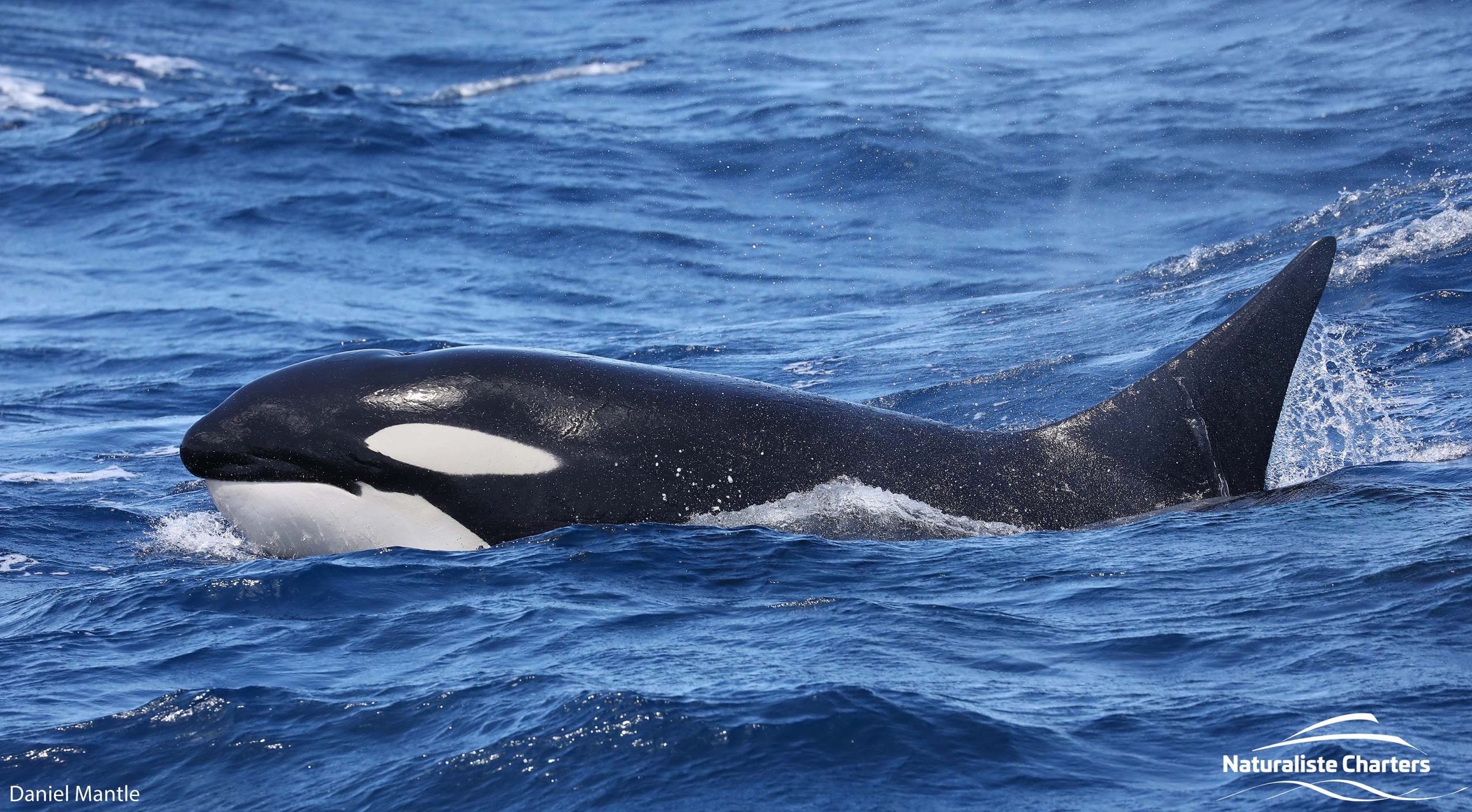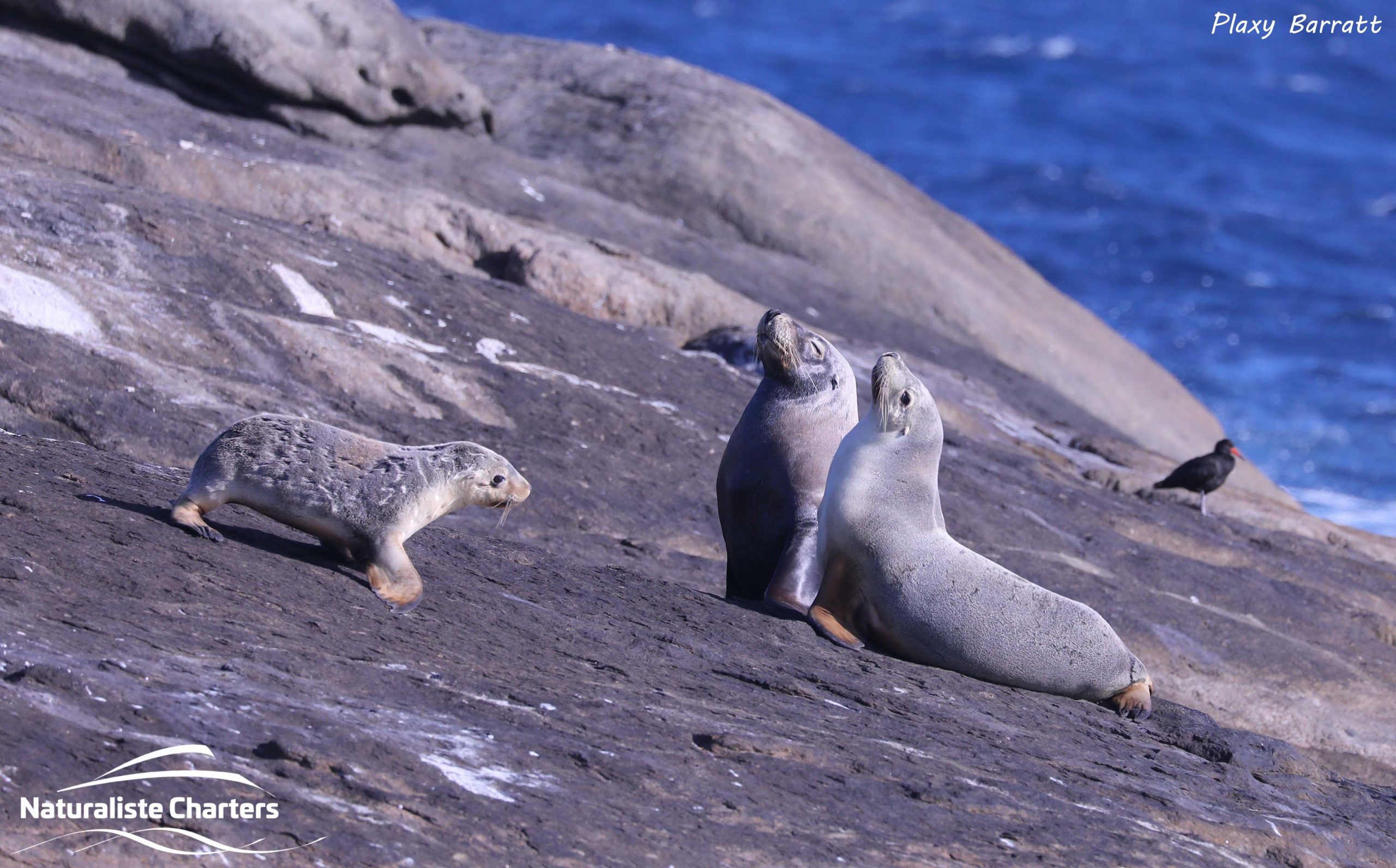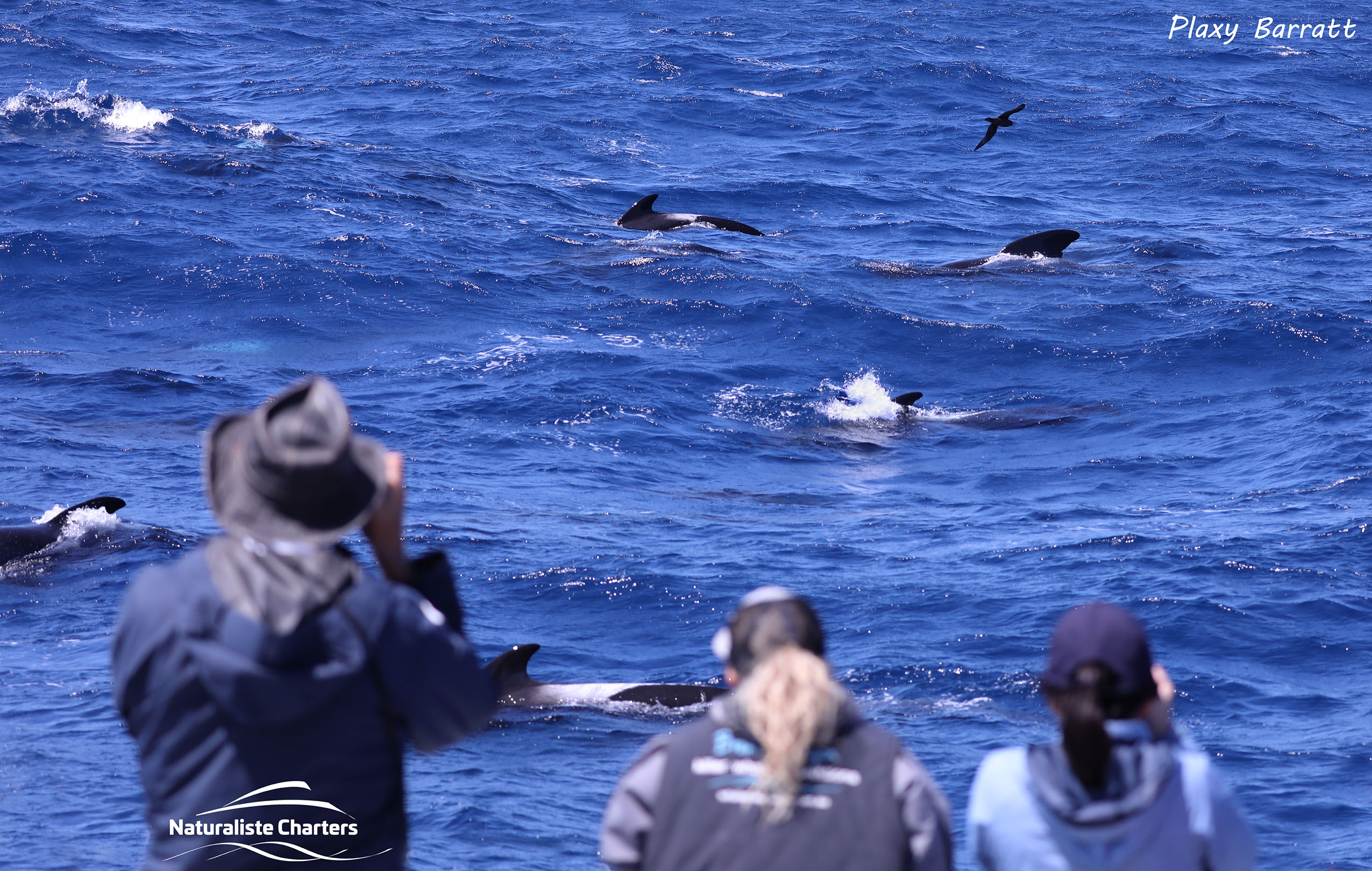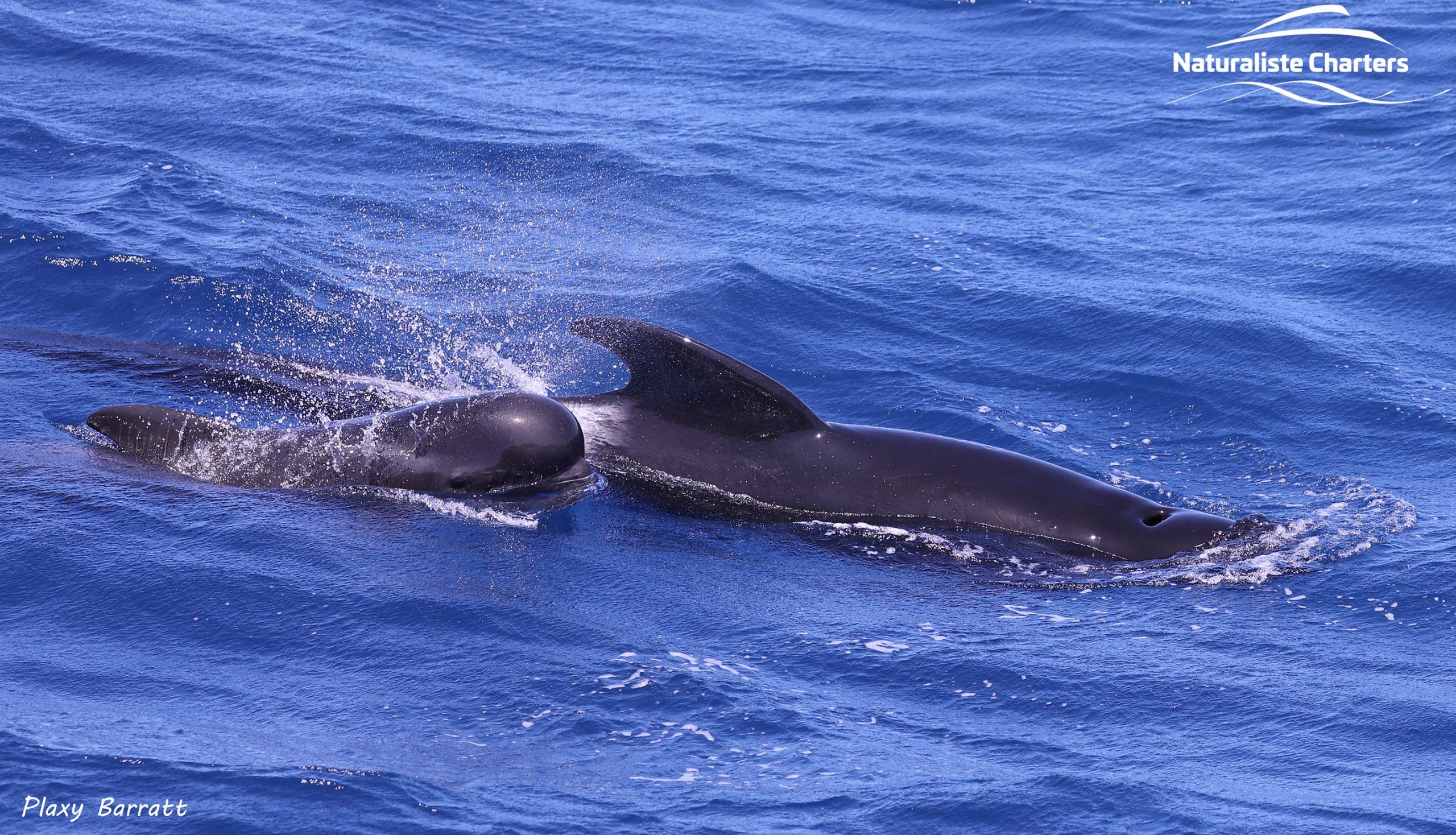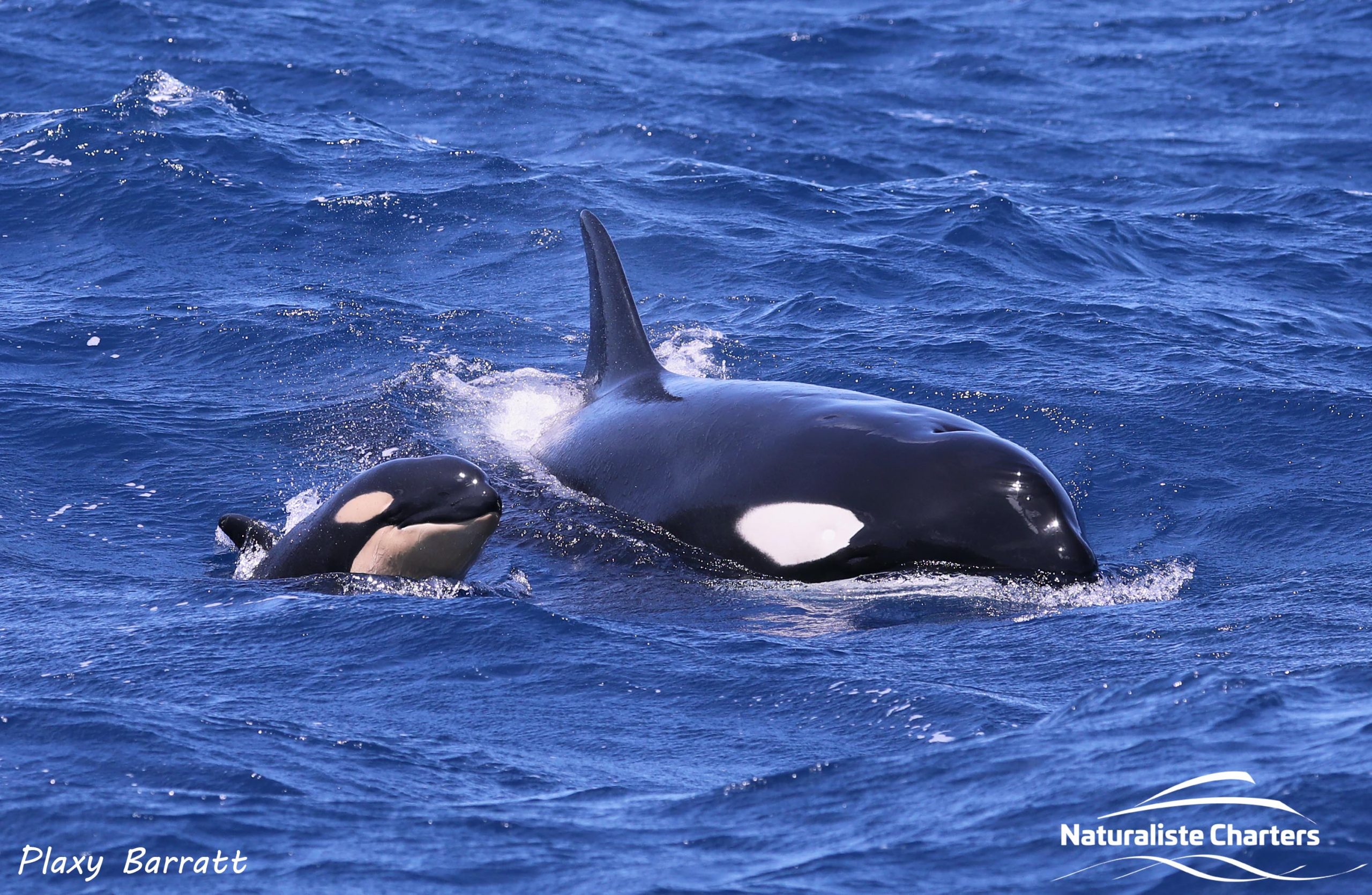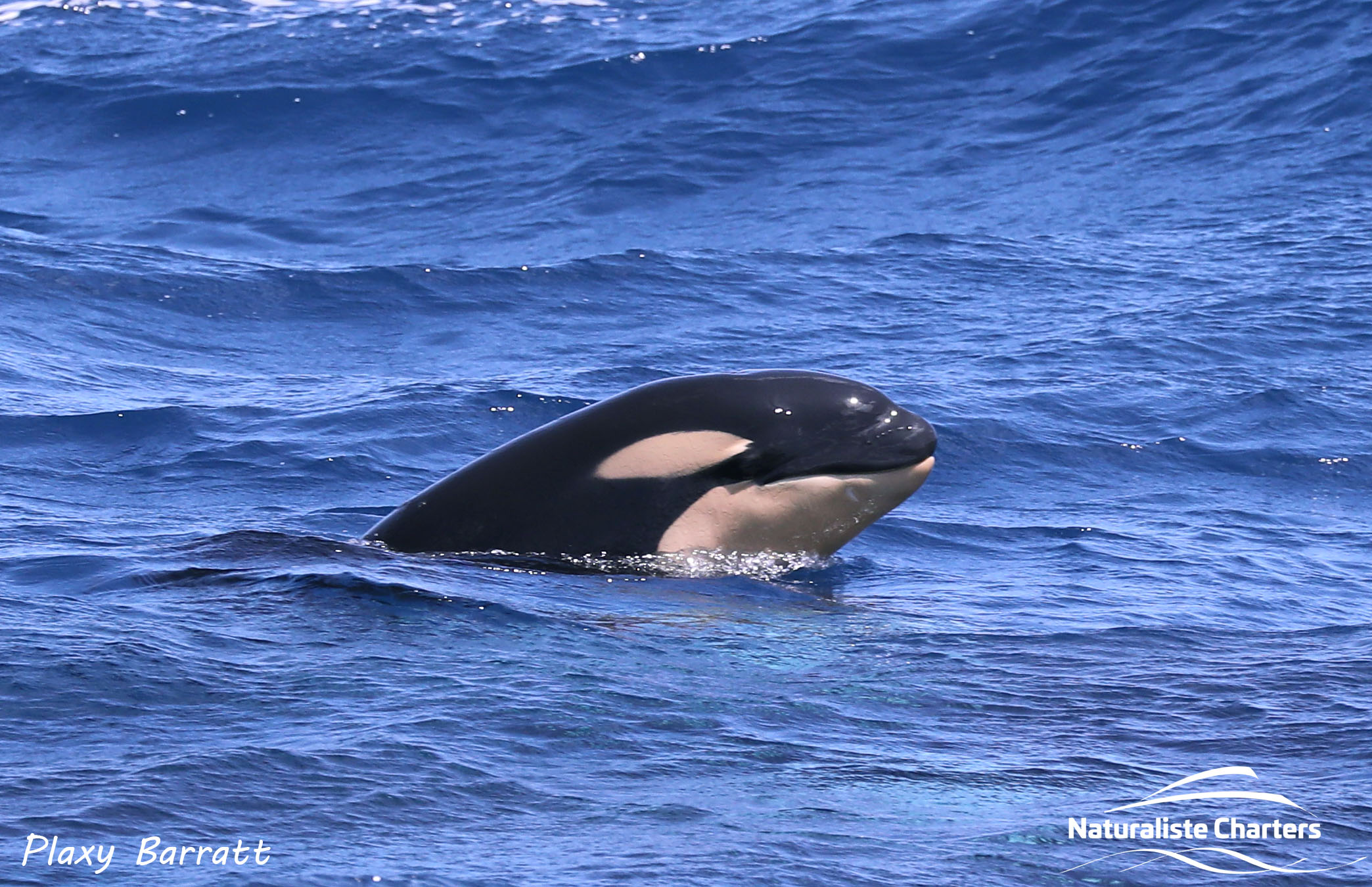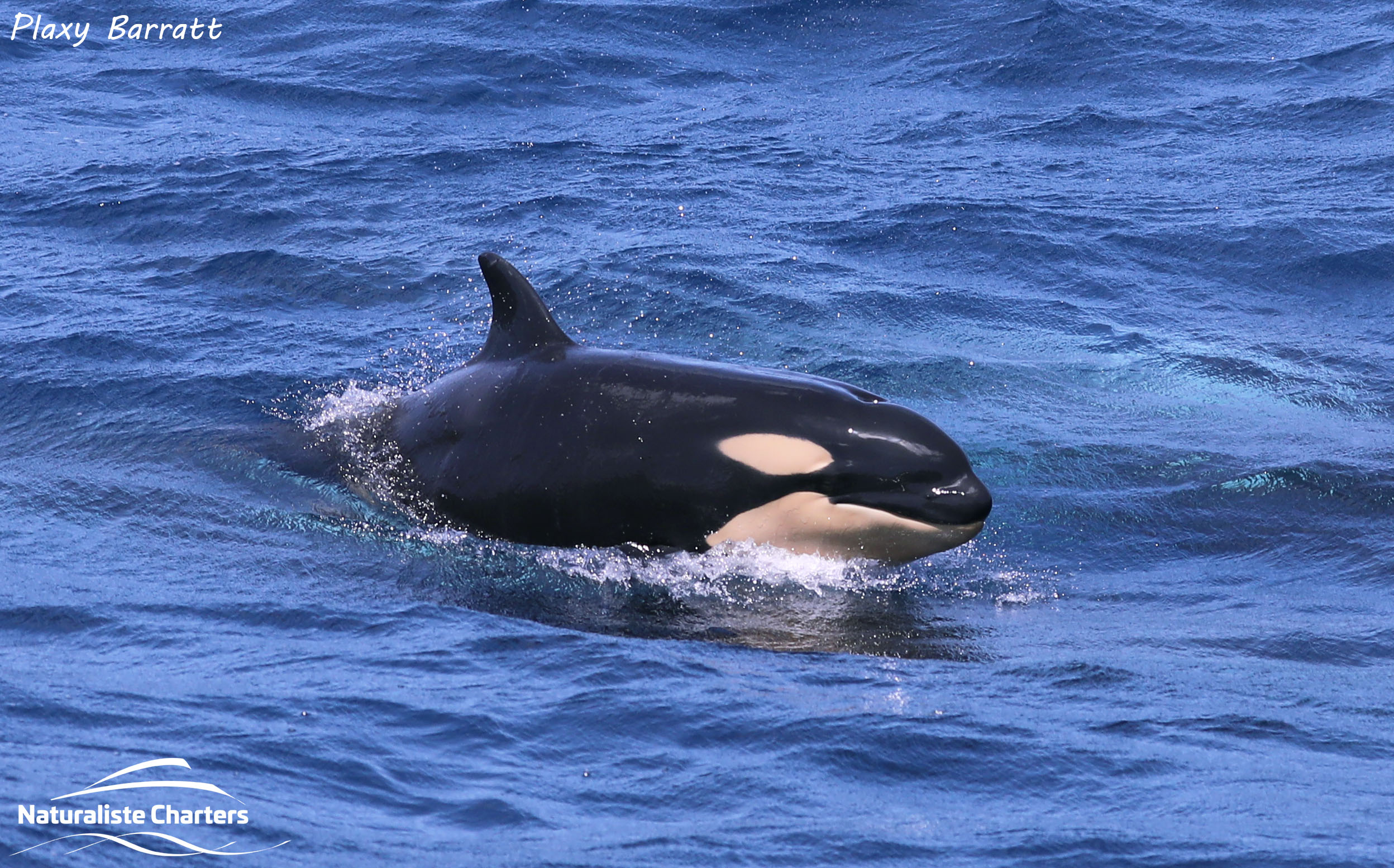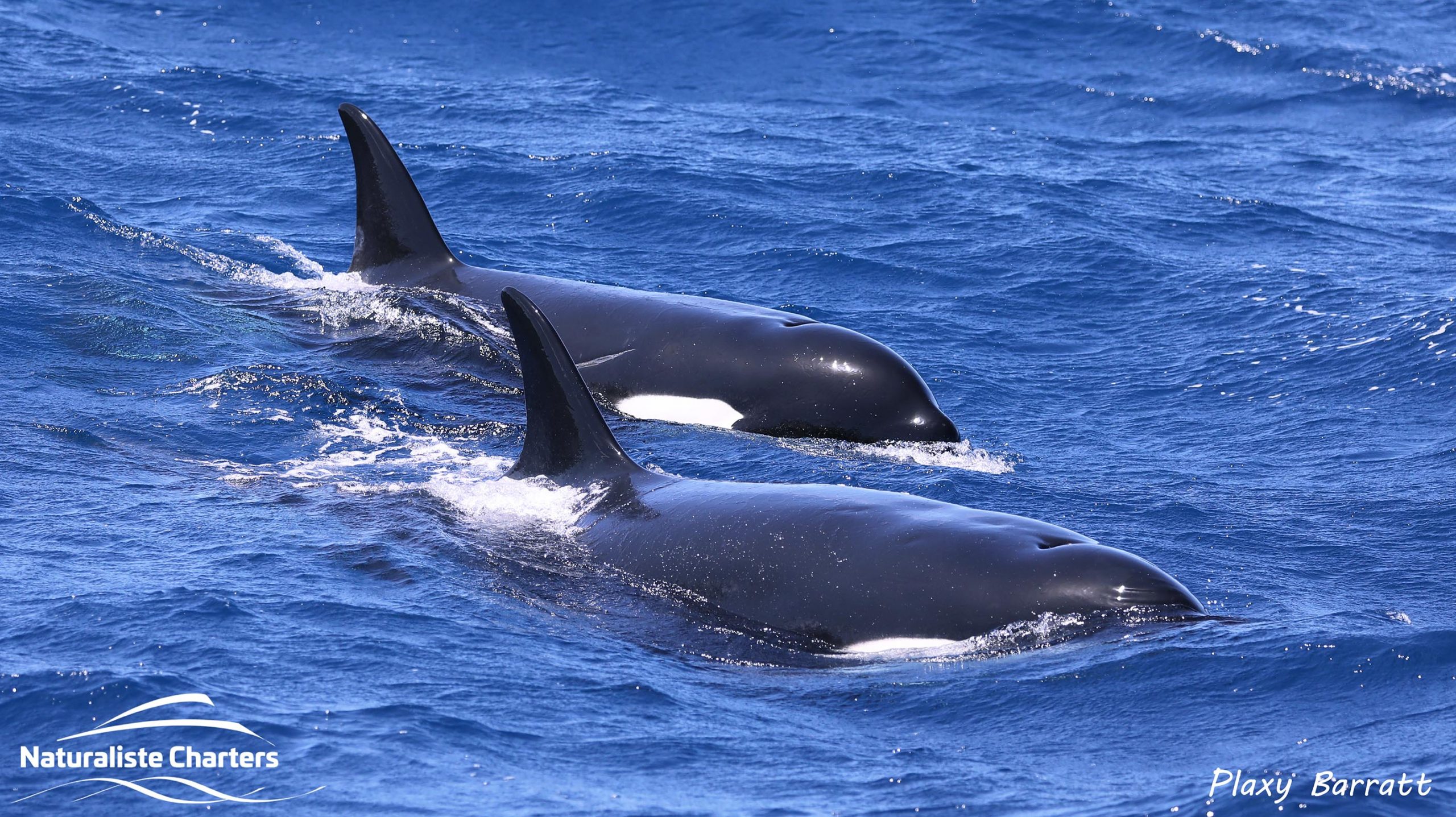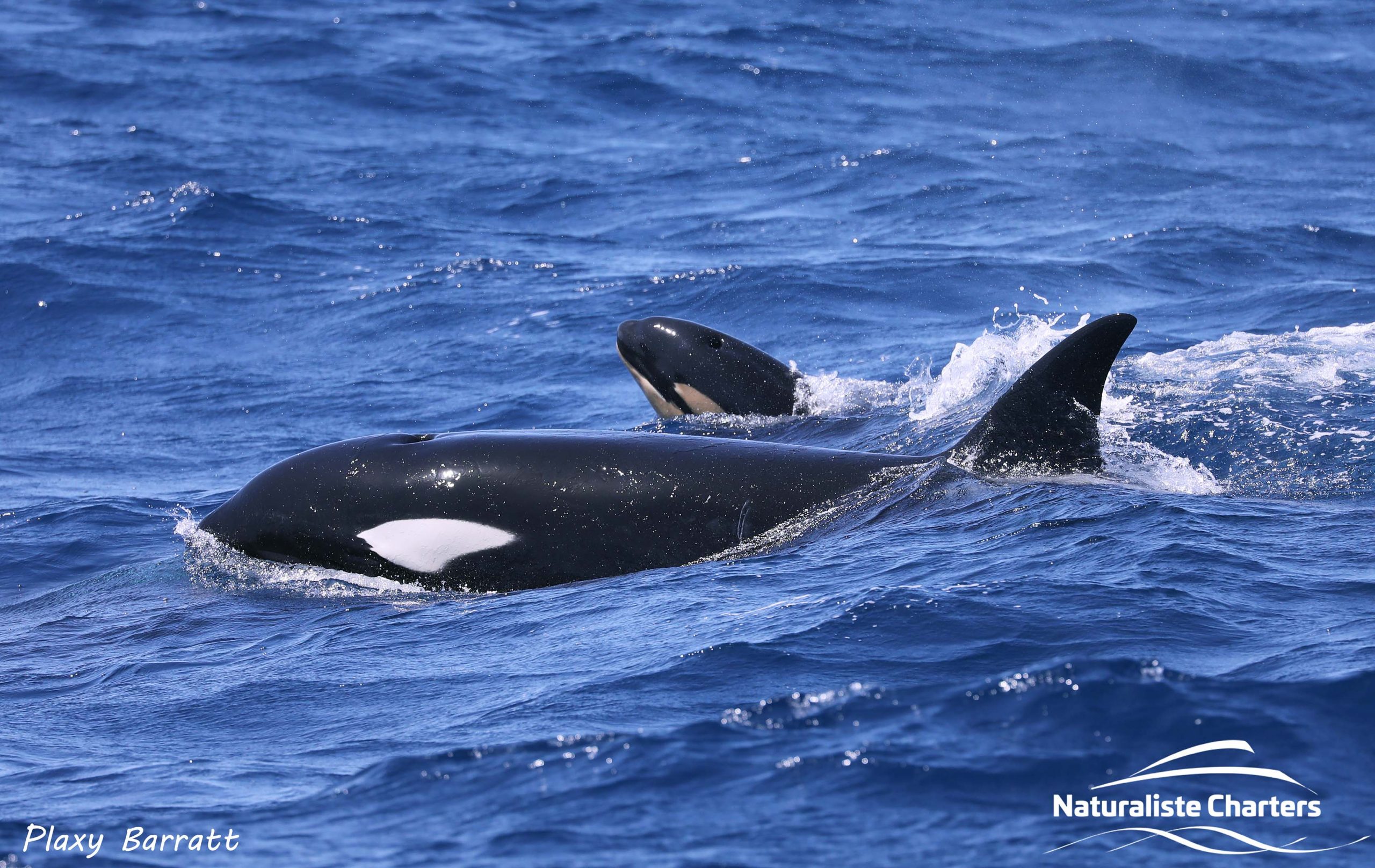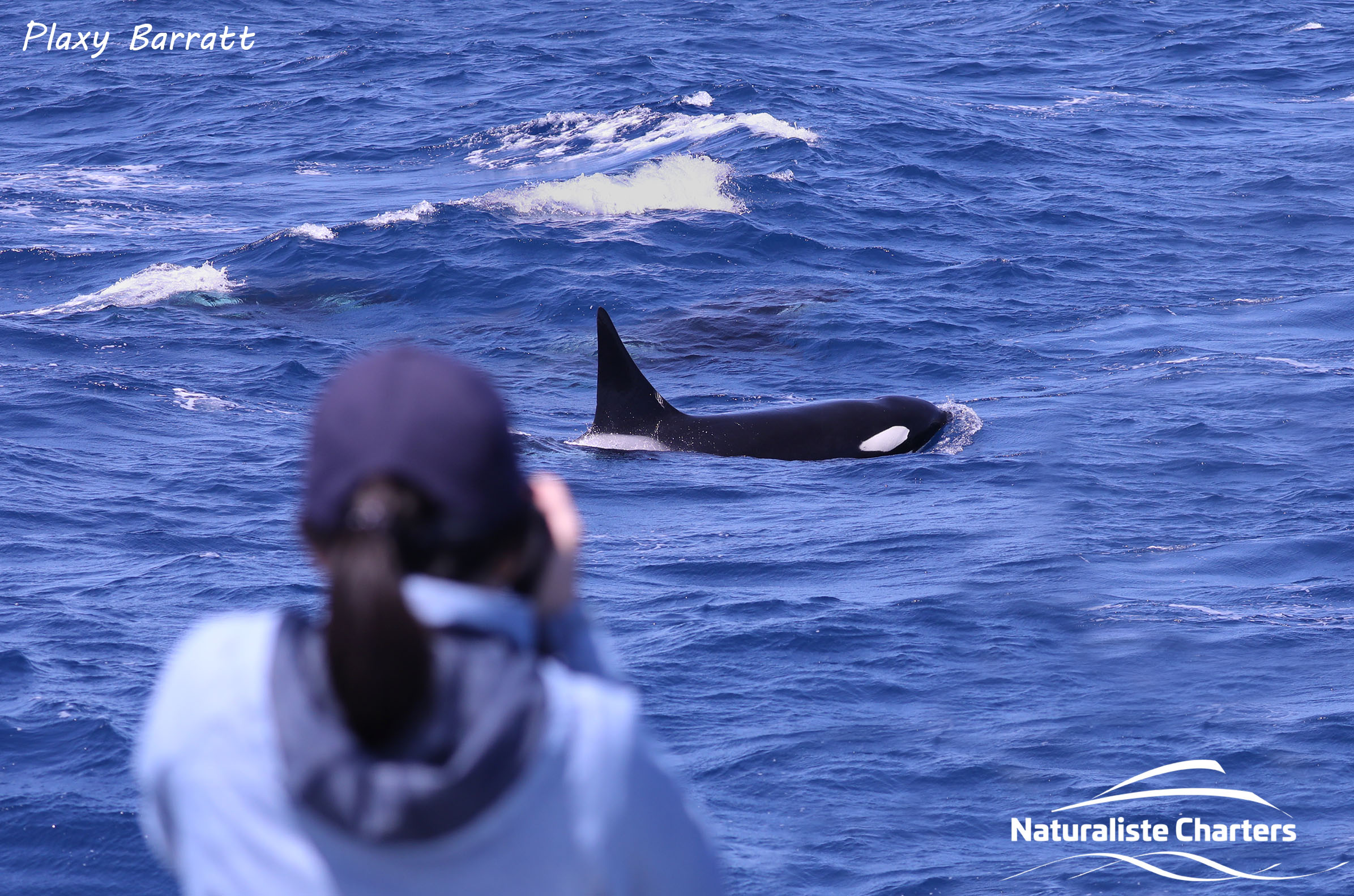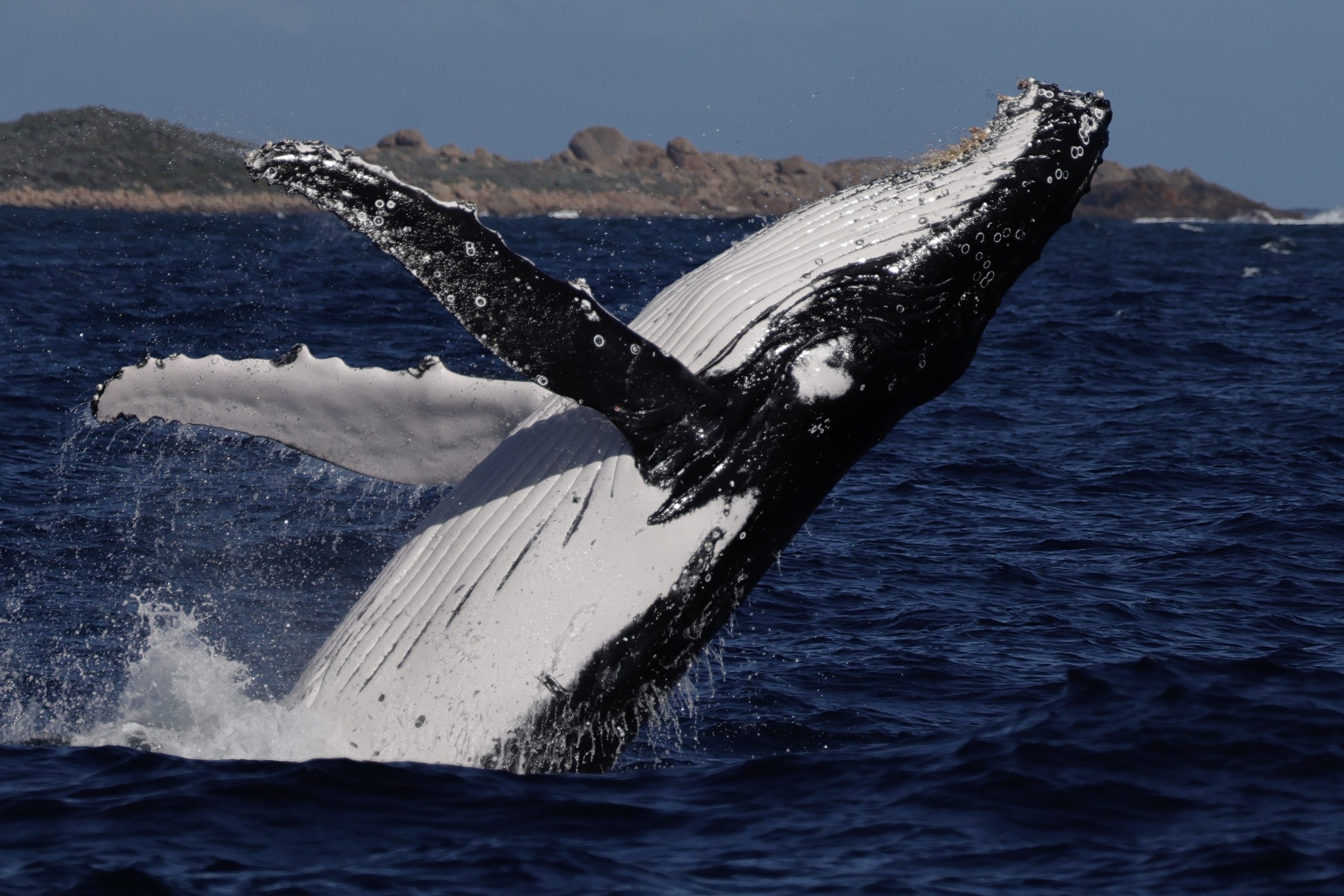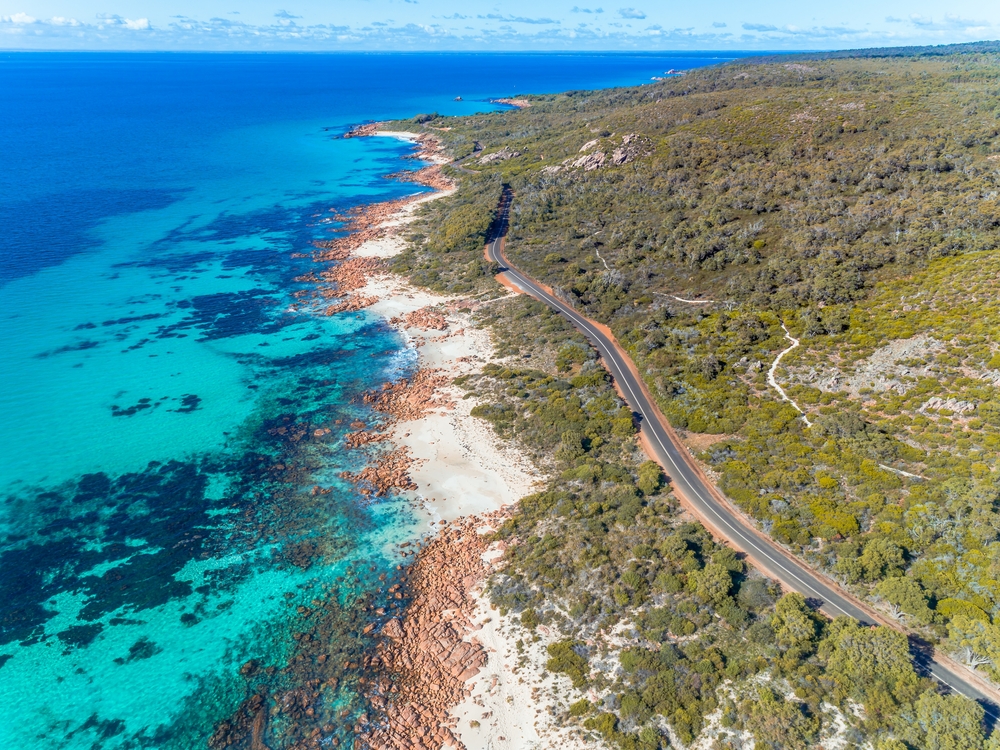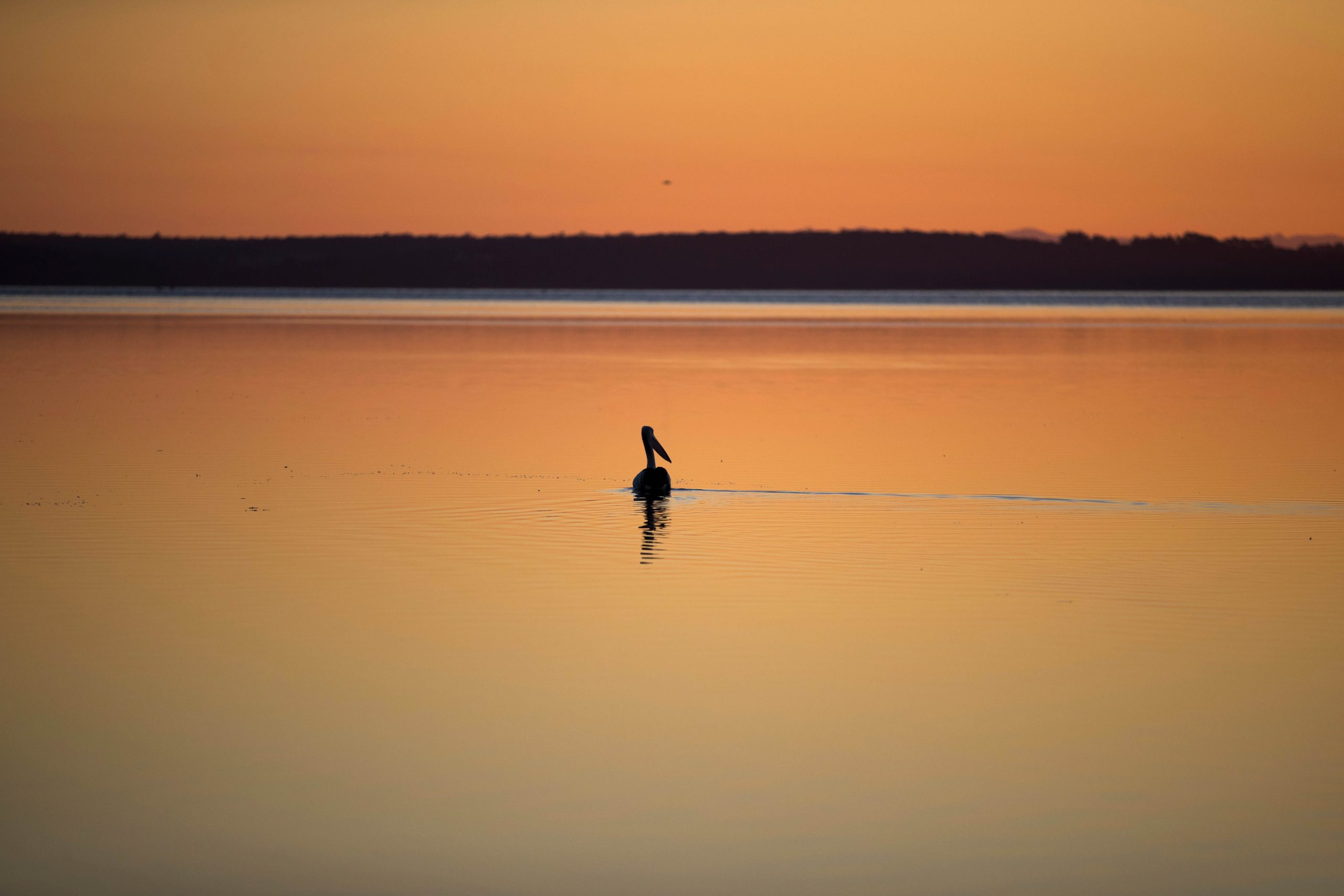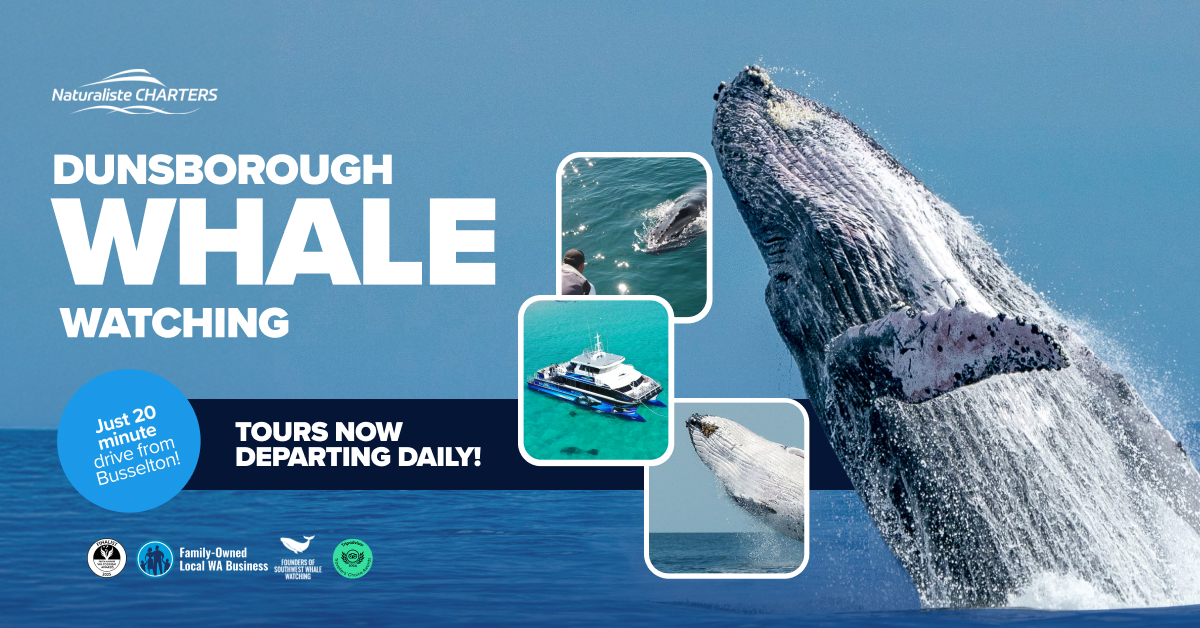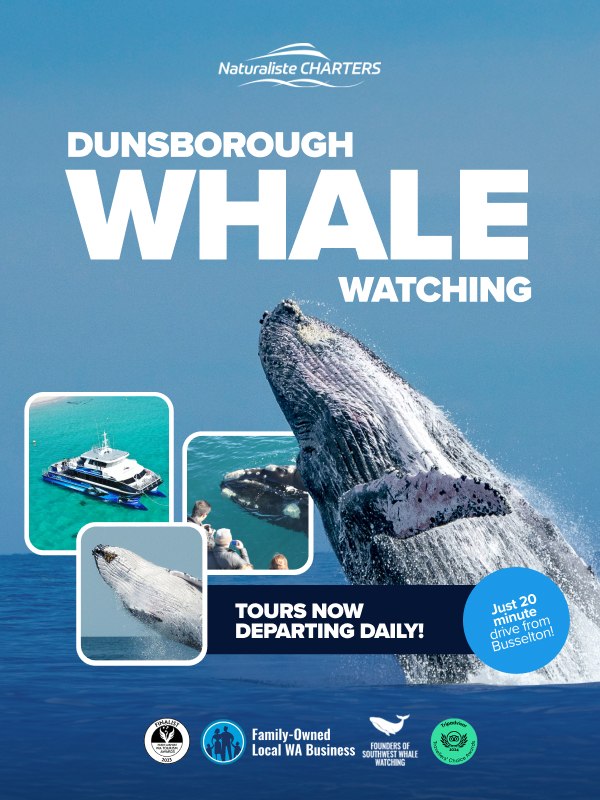Neonate Orca Steals the Show in Bremer Canyon
While the adult orca focused intently on hunting, scanning the depths for prey — likely tuning in to the faint clicks and sounds of elusive Beaked Whales below — one tiny neonate calf had very different plans. Multiple pods were working the hotspot today, creating an electric energy across the canyon.
For today’s Killer Whale Watching in Bremer Canyon update, the action picked up right where we left off yesterday. It was clear from the moment we arrived that we were in for another special encounter.
Playful Neonate Orca Behaviour on Display
Young calf Neo, a neonate orca still mastering the art of swimming, came surging towards our vessel with wide-eyed enthusiasm. His small size was amplified by his enormous curiosity — a contrast to the calm, purposeful movements of the adult pod members.
Neo’s energy was infectious. He delighted everyone onboard with his growing repertoire of tricks — playful back flops, clumsy side flops, twisting turns, spy hops, tail slaps and even an enthusiastic little “wiggle” as he powered past the bow.
It wasn’t just the actions but the personality that captivated us. This neonate orca wasn’t just practising survival skills — he was showing off!
Nani and Neo’s ever-watchful mother stayed close by, rarely more than a few body lengths away. Like all neonate orca, Neo was still heavily dependent on his mother for guidance and protection. On several occasions, he surged away from the pod, only to be swiftly chauffeured back towards the family group by mum’s gentle but firm presence.
Neo’s antics played out against the backdrop of the deep blue canyon waters, with his glossy black and white body sparkling as it broke through the swell.
Pilot Whales Provide More Marine Magic
After an unforgettable morning with the orca, we set our sights on finding another of the canyon’s charismatic residents — Pilot Whales.
Sure enough, a relaxed pod of approximately forty Pilot Whales appeared, moving with slow grace through the swell. This close-knit family group showed plenty of curiosity towards our vessel. Some lifted their large, rounded heads from the water in a classic spy hop — their dark eyes appearing to meet ours.
Others surfed the 2-metre swells like seasoned professionals, gliding down the waves towards our bow before veering away at the last moment.
Several tiny calves — some only half a metre in length — stuck close to their mothers. Their tiny dorsal fins and foetal folds were clear signs of their neonate status, further reinforcing today’s theme of baby wildlife.
Familiar Orca Faces Return to the Hotspot
Returning to the hotspot, the excitement continued as Urkel and Noosa approached. Split Tip, one of Bremer Canyon’s most recognisable orca, made a surprise close pass at the stern. She surfaced dramatically, sending a powerful exhalation of breath — and seawater spray — directly into the faces of delighted guests standing at the back deck!
The encounter wasn’t over yet. Two bold juveniles zoomed beneath our vessel, twisting to turn sideways as if to get a clearer look at their fascinated audience. It’s hard not to wonder — who was watching who?
Sea Lion Encounters at Glasse Island
As we journeyed back towards shore, we made a stop at Glasse Island — a rugged rocky outcrop that’s home to a small but lively population of Australian Sea Lions.
Here, a vocal Sea Lion pup was calling relentlessly for its mother. She rested nearby, positioned uncomfortably close to a massive, dominant bull — his size and presence an unmistakable threat to smaller males and vulnerable young.
As the bull shifted his focus towards a heavily pregnant female, the clever little pup seized the moment. With an awkward scramble and a splash, he raced back to his mother’s side, snuggling up for a much-needed feed of warm milk — a peaceful moment within the wildness of the Southern Ocean.
More Neonate Whale Watching Moments Await
It’s days like today that remind us how lucky we are to witness the next generation of ocean wildlife. Whether it’s a playful neonate orca in Bremer Bay or a tiny neonate humpback calf spotted during our winter tours, these young whales bring a whole new energy to our whale watching experiences.
Stay tuned for more Whale Watching in Augusta blogs coming soon!
The whale season in Augusta (May to August) is a magical time to observe mothers and calves in the sheltered waters of Flinders Bay — with plenty of opportunities to spot neonate whales beginning their life journeys in Western Australia’s stunning waters.

